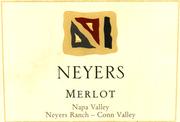 |
|
Wine Details
Price:
$30.00 per bottle
Description:
The first truly great wine I tasted was a Pomerol, and I’ve loved the wines from this lovely ‘Right Bank’ village ever since. With their high percentage of Merlot and Cabernet Franc (the legendary Ch. Petrus is 92% Merlot), Pomerols tend to be more subtle than wines made from Cabernet Sauvignon -- less grapey, more earthy or mineral. They are frequently softer wines, not always immediately impressive; they require some patience to appreciate. Today I treasure the small collection of them I’ve built up over the years. My fondness for Pomerol led to our decision in 1984 to plant our Conn Valley property to Merlot and Cabernet Franc. Although our newer vineyards are planted to Cabernet Sauvignon, my heart has always been in the original 15 acres planted to these ‘Right Bank’ varieties. Over time, we’ve improved the farming practices, modified the blend, and advanced our winemaking. In 1999 we began farming organically. This sweeping change exaggerated the other improvements and we saw a dramatic rise in wine quality, culminating in our 2002 vintage of Merlot. Dark colored and filled with an aroma of ripe cherries, the wine is 75% Merlot, 15% Cabernet Sauvignon and 10% Cabernet Franc. The entire production comes from our 45 acre ranch in Conn Valley, grapes grown on a hillside that reaches an elevation of 300 feet or more. Although the ranch is barely a mile east of the Napa Valley floor, the climate is noticeably cooler, meaning that ripening is invariably delayed. Because high levels of Basalt in the soil keep nutrient levels low, the vines must struggle to produce a crop, and yields rarely exceed two tons per acre. The 2002 Merlot is subtle, graceful and complex, a combination that makes the wine complete and satisfying.
|
|
|